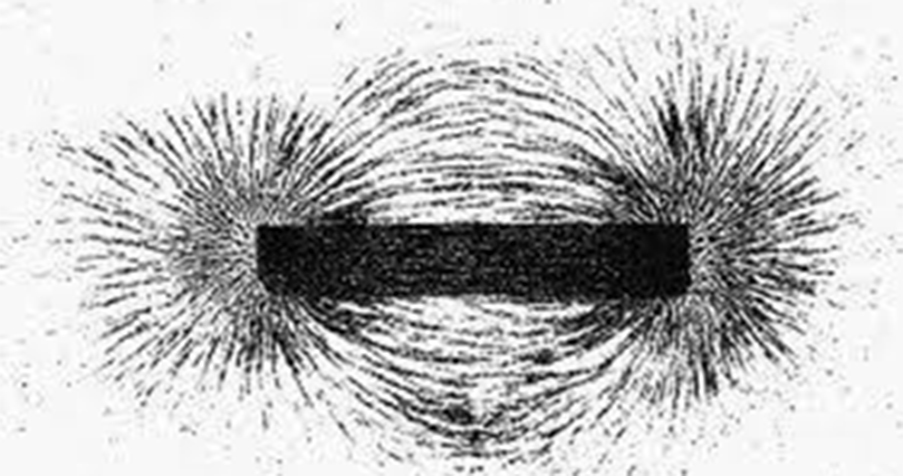Polarities and the Mercurial Nature of Capital
Jan 16 2020
In today’s parlance it is almost impossible to address the mechanics of economic, political and cultural life without bumping into a narrative of polarities. It seems a logical extension of our dualistic world view—right/wrong, mind/body, spirit/matter—and a truly misleading approach to understanding experience. Experience, if one is attentive and honest, is never so simple. I am proposing in this article to reframe the conditioned narrative of polarities, and in its stead aim toward a more mobile view of both-and through practical and metaphoric views of the element of mercury. Then to use this view as a further basis for understanding the nature of capital as a symptomatic reflection of our current economic life and times.
The Convention of Polarities
The conventional narrative about polarities is one of opposites. Opposites necessitate each other so to speak; one defines the other. Together they complete what appears to be a whole. From a more encompassing view, opposites actually mark points in a whole field of possibilities. For example, when you sprinkle iron filings on a paper placed over a long magnet, you see lines of the filings bridging the positive and negative poles, and beyond. Invisible forces are made visible, to borrow a phrase from modern artist Paul Klee, though he may have been referring to matters more metaphysical.

The principal in magnetism is: opposites attract, likes repel. As is illustrated here, the iron filings map an energy field which is otherwise not visible to the human eye. Without this tangible metric of iron filings, a naive materialistic world view could say the field is not a scientific fact. Of course, that posture has changed dramatically in modern times—what and how we know have taken a quantum leap. Despite this visionary scientific understanding, general culture seems to be still attached to the material, the visible, the object, the thing, and increasingly uncomfortable and distrusting of the invisible, the intangible, and that which can be considered spiritual. Such is the consequence of late stage materialism.
Interestingly, if one looks past the conventional narrative of polarities, and looks instead to experience in the flow of time, the senses unite inner and outer worlds. With an understanding of this seamlessness life becomes deeply engaging, complicated, real, and direct. The capacity to understand that experience—to not let it fall into the pattern of a belief system, unconscious bias, or a preconceived narrative is very challenging work. It requires a willing self-knowledge and an openness to live with a quality of experience that holds such understanding as hypothetical and always in the process of being tested, guided by what the world is speaking and by one’s own inner voice. This fundamental attitude leads inevitably to a foray into the invisible or spiritual. The discipline then is to overcome the distrust of our connection to the world, a distrust that drives us toward materialism and the strictures of habit and fear. Instead, we can move toward a place of trust in our innate knowing that will shine light on the habits of thought and action and make it possible to see the world as an extension of oneself and oneself as an extension of the world. This is one approach to overcoming the dualistic narrative that says one can only be one or the other, when in reality one is both self and world. This is the magic, mystery, and magnificence of human consciousness—and points to the risky, difficult, and fundamental work that engaging with this mystery entails.
After Polarity, a more Mercurial View
Some of you may have had the chance to play with mercury in science class. It was and remains a magical experience. In the lab, we were asked to observe mercury’s capacity to behave in what appeared to be two different ways. The terms used then were adhesion and cohesion. Adhesion meant the element’s capacity to stick to the surface it was touching—like adhesive tape. Cohesion meant its potential to bind itself together into a single globule. When that cohering moment happened, it seemed miraculous even though I knew there was some scientific explanation about how it could change, be so beautiful and also so toxic. To understand the nature of mercury one has to understand the reality of both-and as a unitary concept. While it shapeshifts from fragments to cohesion almost spontaneously it seems, both conditions coexist in potential at all times. That is, no matter the physical state at any given moment, the opposite is also possible at any given moment. This is what defines the inner nature of mercury, the coexistence of opposites that manifest a particular state depending upon context. Mercury is highly sensitive to contextual, environmental, and maybe not so visible phenomena working on it, as well as on what is in it. This is why mercury is so useful in thermometers, for example. Temperature, like the arcs of iron filings in magnetism, is the both-and of expansion and contraction.

The Mercurial Nature of Capital
I breathe the world in and out, and work on and in the world. I depend upon interdependence. In this sense I am connected to the peasant farmer, the Wall Street banker, the public school teacher, the factory worker, and the town clerk. I am part of all those lives because while I do my work, they do theirs. I make others’ work possible as they make mine. This economic rhythm, this systolic-diastolic pulsing, is what creates the value of capital, sometimes in the form of ideas, sometimes in the form of relationships, sometimes in the form of money, sometimes in the form of equity, sometimes in the form of gift.
The economy lives in a mysterious way both visible and invisible, though most of what we call economic by convention surfaces in the visible. We can account for transactions; they are often monetized moments. And, though we can certainly recognize the arising of needs or desires, we do not know how to account for them. They are drivers, deeply personal and also universal. Hunger is not economic, but food is. The motivation that infuses my work is not economic; the product of my work is. So, we live in a pulsation between the world of the individual inspiration (spirit) and the world of goods and services (economy).
Capital lives in that same dynamic between spirit and economy. Capital is how spirit shows up in the economy. Its character is entirely mercurial in having the qualities of liquid and solid (liquid and illiquid assets) depending on circumstances, of being a healing and toxic substance depending upon proportion and use (equity and toxic assets), of dancing between adhesion and cohesion (expenditure and accumulation) and of moving between expansion and contraction depending upon temperature (inflation and deflation). This flexible and ever-changing nature is inherent—and necessary. To understand how it works requires the capacity to picture the complicated and elegant unitary reality of both-and.
Of course, mercury, the elemental metal, was named for the Roman god Mercury, the latter-day name for the archetype the ancient Greeks called Hermes, also named Coyote in Indigenous cultures. Whatever we choose to name the archetype, it is alive today. Hermes was the trickster, the thief, the duplicitous one, the shapeshifter, the disruptor, the catalyst. He could move into (adhere) to other identities and then return to his own coherence. Though he was feared and loved, unnerving and inspiring, cursed and invited, he was nonetheless a certain partner of consciousness. Through his actions he was the cause of transformation on personal and systemic levels; in his being he was the messenger and instigator of inquiry and the new.
So we live with the unanswered question: What is capital? Yet capital, along with labor and natural resources, anchor the whole of modern economic life. I would even venture to say that capital and the understanding of it are absolutely essential as leverage for the evolution of consciousness. Why else would capital be such a problem? Our understanding of it, our relationship to it, our management of it will either save us or destroy us. Mercury was the catalyst, the one who raised the question, created the circumstances, but it was not Mercury’s task to make the choices we call mythology, history, or our own destinies—this is the evolution of Western human consciousness, and solely our collective responsibility.
In its mercurial “quicksilver” qualities capital moves quickly, lightly, in the force field of gravity and levity. And since capital is so linked to the transformation of thought into economic deed, it invites the danger of moving from healing to toxic when it can move faster than thinking or consciousness. This is the shadow side of the trickster and thief, a shadow reflecting an often ignored sometimes celebrated problematic imbalance.
Mercurial Consciousness
Moving beyond the convention of polarities to a more wholistic imagination requires an understanding of and acting out of a dynamic and reciprocal relationship between one’s path of self-knowledge (as a way to know the world) and a path of service to the world (to know the self). In the magnetic field, the iron filings form lay lines between the positive and negative poles and beyond. Each iron particle aligns along the same polar logic of positive-negative attraction. There is no room in this field for an undefined middle space; the particles are simply responsive to the external ordering forces. The irony here is that iron is mined as an ore and becomes one of the hard metals. It is also metaphorically forged into the iron hand of power. This I think characterizes the current state of cultural polarization—there is simply no intermediate ground.
On the other hand, mercury defies polarization as it shapeshifts within the boundaries of its own mass. It is highly sensitive to the environment and its own inherent mutable condition. To work with the observation of mercury, to begin to imagine in a disciplined way how it operates, leads to incorporating many factors in ascertaining a wholistic view with a slight caveat of mystery—exactly those conditions that create the transition moment between adhesion and cohesion.
This phenomenological view and approach might bring new life to understanding capital as it moves from the realm of ideas (spirit) into the economic world (material). It is not that the spirit disappears at that transformational moment, rather, it shapeshifts into the quality of social conditions connected to the material. This parallels mercury’s environmental sensitivities.
Imagine living so deeply into the transactions of economic life, the presence and absence of capital, that the spiritual dimensions of intention, trust, and destiny at work through relationships become visible. I think we often sense these in a distant sort of way, like an echo of some past recognition, a kind of afterimage, but rarely take the time to bring them to consciousness. The imagination here is of breathing between self and world, spirit and economy in a rhythmic generative cycle, one not bound to polarities but rather guided, as is mercury, by inner nature and the contextual reality of what the world is asking for. Capital is clearly mercurial in nature, but we treat it like iron because it can then align with the desire for power.
So there is a lesson in what the phenomena of nature and observation can reflect to us about human nature and consciousness. This is the mindfulness that archetype and element—spirit and matter—are only separate, dualized and polarized, so long as we obscure the important role that consciousness can play as the active intermediating party to the both-and. “Mercurial” closely characterizes the world we live in. How we work with capital is one highly emblematic and instructive symptom because it is so often misunderstood. Moving from symptom to cause, the real question then is: With what consciousness shall we act in the world and toward what end with the knowledge of both-and—adhesion or cohesion, toxicity or healing?
John Bloom
© 2020
John is vice president of organizational culture at RSF.